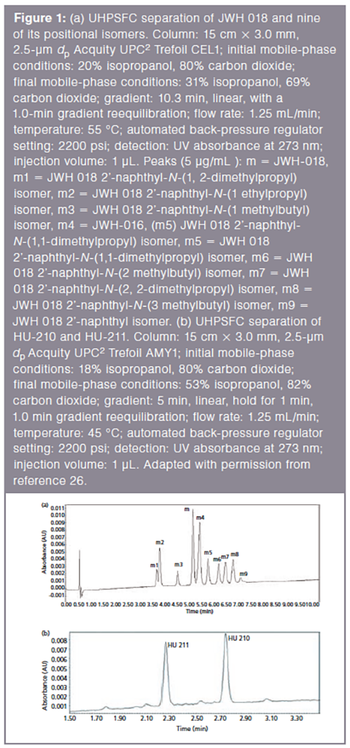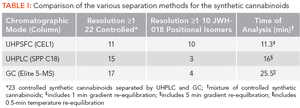Articles by Lauriane Tremeau-Cayel

This article discusses the use of emerging technologies that are complementary to established techniques, to significantly reduce these shortcomings for both synthetic cannabinoids and synthetic cathinones. In this vein, the utility of recently reported approaches including ultrahigh performance supercritical fluid chromatography (UHPSFC)–photodiode array (PDA) ultraviolet (UV)–MS, and GC–vacuum UV is discussed. To increase the specificity of analysis, multiple chromatographic techniques are commonly used. For the analysis of emerging drugs, a combination of GC and UHPSFC is recommended. The utility of a previously unreported coupled-columns approach for UHPSFC to significantly enhance resolution of synthetic cathinones is presented.

This article discusses the use of emerging technologies that are complementary to established techniques, to significantly reduce these shortcomings for both synthetic cannabinoids and synthetic cathinones. In this vein, the utility of recently reported approaches including ultrahigh performance supercritical fluid chromatography (UHPSFC)–photodiode array (PDA) ultraviolet (UV)–MS, and GC–vacuum UV is discussed. To increase the specificity of analysis, multiple chromatographic techniques are commonly used. For the analysis of emerging drugs, a combination of GC and UHPSFC is recommended. The utility of a previously unreported coupled-columns approach for UHPSFC to significantly enhance resolution of synthetic cathinones is presented.

To address the challenges of analyzing new illicit drugs, emerging techniques such as UHPSFC with MS and UV detection, and GC with VUV detection, may be needed, particularly for distinguishing positional isomers and diastereomers.






